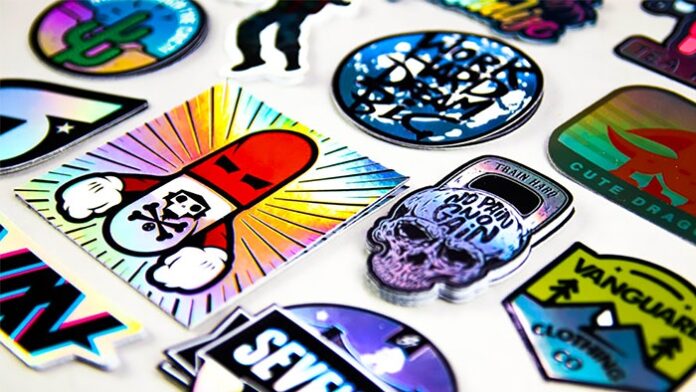Getting custom stickers for your business is a great way to market yourself and your products. There are many different materials available that you can use, including die-cut stickers, sheets, glossy, and matte stickers. Each material has its advantages and disadvantages, and choosing the one that is best for your business is an important decision.
Glossy vs matte
Choosing the right finish is an important part of the sticker process. It’s not only a matter of aesthetics, but also practical considerations. If you’re going to use a sticker on a glass window, for example, you’ll want to choose a finish that will stand up to the elements.
Glossy custom stickers have an extra layer of gloss, giving them a shiny, luxurious look. Glossy labels are great for colorful designs and eye-catching graphics. They are also durable, making them a great choice for outdoor use.
Matte stickers have a softer feel, giving them a more subtle look. They also have a satiny light diffusion, which makes them easier to read. They also are easy to apply, which makes them a popular choice for temporary uses.
Both glossy and matte labels are durable, scratch-proof and weather resistant. They can be applied to a variety of surfaces, including plastic, metal and glass. They also provide a high-impact focal point, making them a great choice for marketing materials and promotions.
Die-cut vs sheet
Unlike regular stickers, die-cut stickers are cut in one piece. There are no leftovers, making the sticker easier to apply. They also look more professional. They are usually used to create custom-shaped stickers, such as wall decals or logo stickers.
Historically, the die cut was a specialized tool used in manufacturing industries. A sharp steel blade was used to cut the material into the shape of your design. However, you can also create a die cut sticker with an electronic cutting machine or a laser cutter.
The die cut vs sheet custom sticker comparison is a tough one to make, as each has its advantages. However, the die cut stickers are better for giving your design a pronounced boost.
Basically, the die cut vs sheet custom sticker comparison involves the size of the backing sheet. The larger the backing, the harder it is to accurately measure the sticker’s size. Also, if the sticker is too big or small, the backing can damage the sticker’s edges.
Die-cut singles vs kiss-cut singles
Using die-cut singles or kiss cut singles is a good way to add a unique touch to your printed materials. Both of these styles offer full color printing and free custom shapes. However, there are some differences between the two.
Die-cut singles are typically cut around the edge of a design. They are also cut through the backing material. This creates a square backing for the stickers.
Kiss cut singles are cut through the vinyl. This method allows for a larger backing and more adhesive tags. It also leaves the paper backing intact. It is a popular method for generating stickers for small sticker sheets. It is also easier to peel the stickers off the backing.
Die-cut stickers are a great way to give stickers away as a promotional item. They are typically used as giveaways at events. They can be very large and are also used to create custom-shaped stickers.
If you are considering using stickers for a small sticker sheet, Kiss cut singles are a good option. They can be used for generating custom-shaped stickers, which can fit more stickers onto a sheet. They are also available with a glossy UV lamination to protect the stickers from sunlight.
Vinyl vs BOPP
Choosing the right material for your custom stickers is a key step in winning the competitive market. Vinyl and BOPP are two common materials used for labels. Both are incredibly durable and long-lasting. But each material has its own pros and cons.
Vinyl is the most common material used for custom stickers. This is because of its durable qualities. It can be used in the outdoors without tearing or fading, and is also good for large windows and siding. However, vinyl labels are a bit more expensive than paper labels. It also has a rubbery smell.
The other material used for custom stickers is BOPP (biaxially oriented polypropylene). This type of plastic is very durable and has a strong adhesive. It is also waterproof and resistant to oil and moisture. However, it is not as flexible as vinyl. It is also much more expensive. It is not recommended for food labels. It is also harder to apply than vinyl.
















